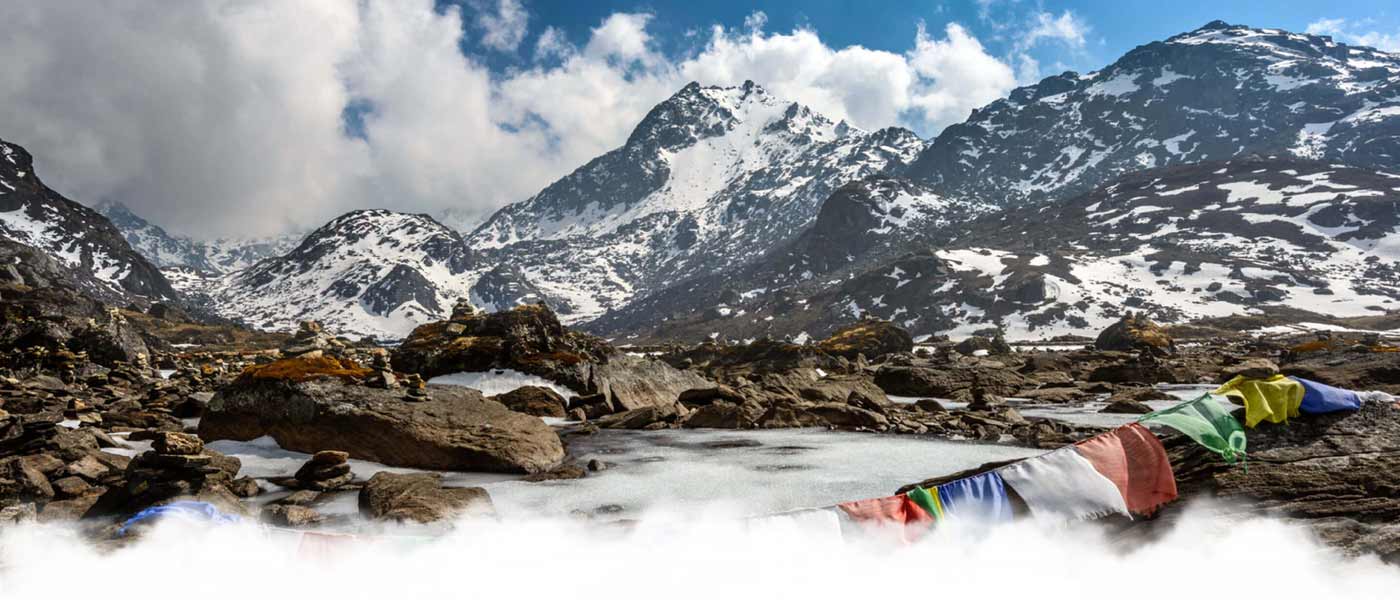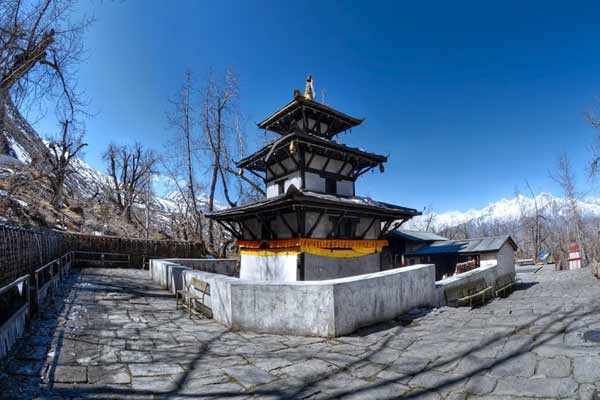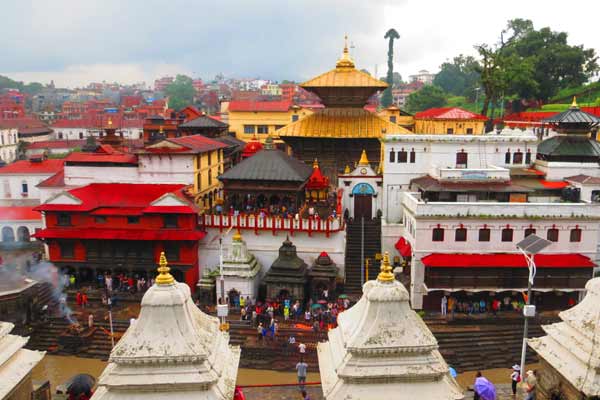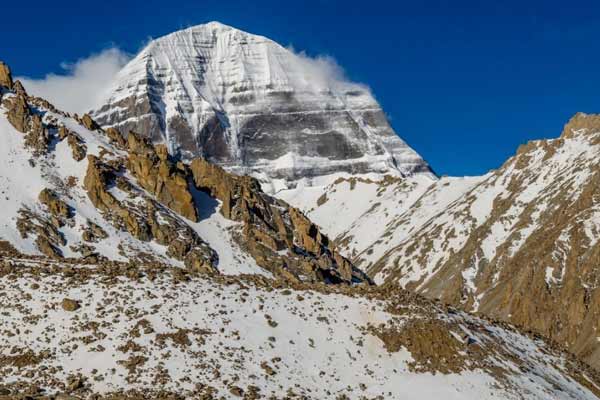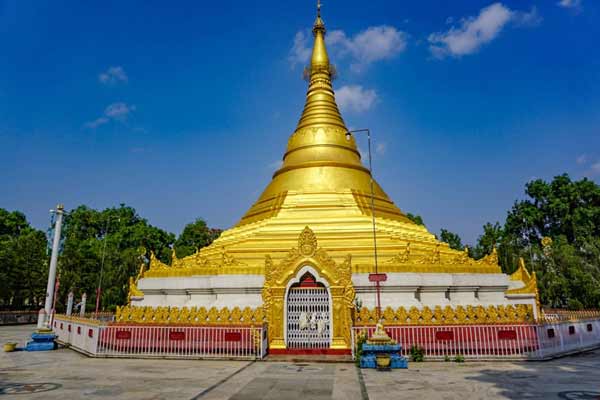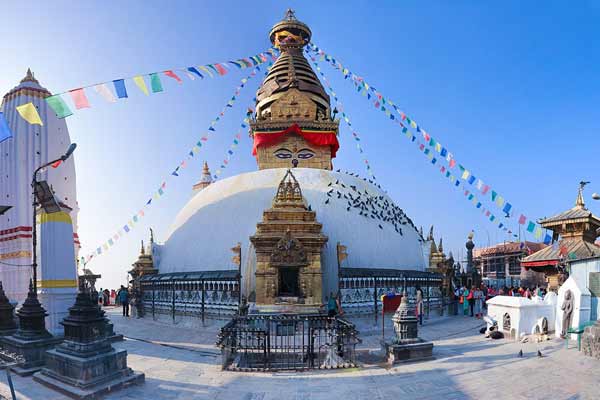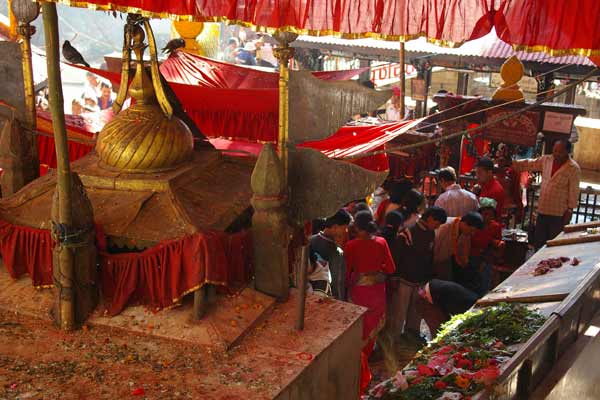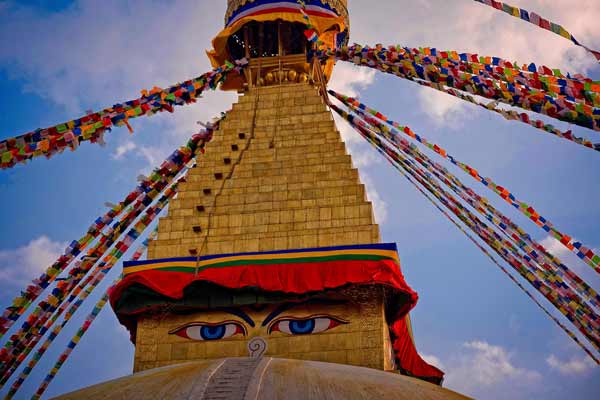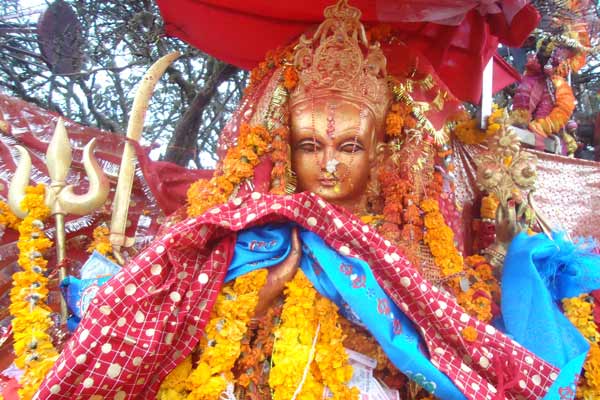
Swayambhunath Temple
Swayambhunath Stupa is the most ancient and enigmatic of all the holy shrines in Kathmandu valley. Its lofty white dome and glittering golden spire are visible for many miles and from all sides of the valley. Historical records found on a stone inscription give evidence that the stupa was already an important Buddhist pilgrimage destination by the 5th century AD. Its origins however, date to a much earlier time, long before the arrival of Buddhism into the valley. A collection of legends about the site, the 15th century Swayambhu Purana, tells of a miraculous lotus, planted by a past Buddha, which blossomed from the lake that once covered Kathmandu valley.
The lotus mysteriously radiated a brilliant light, and the name of the place came to be Swayambhu, meaning 'Self-Created or Self-Existent'. Saints, sages and divinities traveled to the lake to venerate this miraculous light for its power in granting enlightenment. During this time, the Bodhisatva Manjushri was meditating at the sacred mountain of Wu Tai Shan and had a vision of the dazzling Swayambhu light. Manjushri flew across the mountains of China and Tibet upon his blue lion to worship the lotus. Deeply impressed by the power of the radiant light, Manjushri felt that if the water were drained out of the lake Swayambhu would become more easily accessible to human pilgrims. With a great sword Manjushri cut a gorge in the mountains surrounding the lake. The water, draining away, left the valley of present day Kathmandu. The lotus was then transformed into a hill and the light became the Swayabhunath Stupa.
Swayambhunath's worshippers include Hindus, Vajrayana Buddhists of northern Nepal and Tibet, and the Newari Buddhists of central and southern Nepal. Each morning before dawn, hundreds of pilgrims will ascend the 365 steps that lead up the hill, file past the gilded Vajra (Tibetan: Dorje) and two lions guarding the entrance, and begin a series of clockwise circumambulations of the stupa (Newari Buddhists circle in the opposite, counterclockwise direction). On each of the four sides of the main stupa there are a pair of big eyes. These eyes are symbolic of God's all-seeing perspective. There is no nose between the eyes but rather a representation of the number one in the Nepali alphabet, signifying that the single way to enlightenment is through the Buddhist path. Above each pair of eyes is another eye, the third eye, signifying the wisdom of looking within. No ears are shown because it is said the Buddha is not interested in hearing prayers in praise of him.
History of Swayambhunath Temple
This religious site is located 3 km to the west of Kathmandu. It is one of the holiest Buddhist religious sites of the country. The hillock is assumed to be created from a primordial lake, which was present in the region, around 2000 years ago. The existence of this temple has been indicated in an inscription, which was made in 460 AD. Thus, it is assumed that the temple has been in the location since 460 AD or before that. Renovation works were made during 7th century. It is said that there used to be a temple built by Emperor Ashoka in 3rd century BC, but was destroyed. There is no concrete evidence for the same. It is said that King Manadeva built this temple. By 13th century, this temple became an important Buddhist pilgrimage site.
Pilgrimage Sites Nepal
Pilgrimage in Nepal is popular activities among the devotees and researchers. In previous days the land of ancient sages & saint, now Nepal is known as the country of temples. One of the greatest Hindu temples in Nepal “Pashupatinath Temple” is the main attraction of the tour. Similarly other tour packages for Nepal, this trip also begin from Kathmandu - the ancient city of temples. You will visit Pashupatinath temple, Kathmandu durbar square and Swayambhunath stupa. This is one of pilgrim site where both Hindu and Buddhist pilgrims worship for their success & prosperity in upcoming days. Another day we will take you “Dakshinkali Temple” 22 km south west from city. This is the temple of goddess KALI. People believe that animal sacrifices, particularly of cockerels and uncastrated male goats in this temple are the main way that the goddess is worshipped.
The Pilgrimage in Nepal square measure mostly in style among Hindus and Buddhists; thus, thousands of pilgrims visit Nepal per annum to pay court to the revered Gods and divinity. Uncountable temples monasteries, stupas, and many other religious places make Nepal one of the target destinations for pilgrims. However, due to less promotion of those sites, Nepal has not been prosperous in attracting pilgrimage tourists as much it could and should have.
Though Nepal is a small country, it has a variety of beautiful natural factors that attract many people. Various Mountains, rivers, waterfalls, forests, wildlife, sanctuaries monuments, etc. are the significant wonders of Nepal. Besides these dynamic, eye-catching uncountable temples, museums, stupas, & monasteries with a variety of God and Goddess depicting the deep faith of the people.
 +91 9799050299
+91 9799050299 